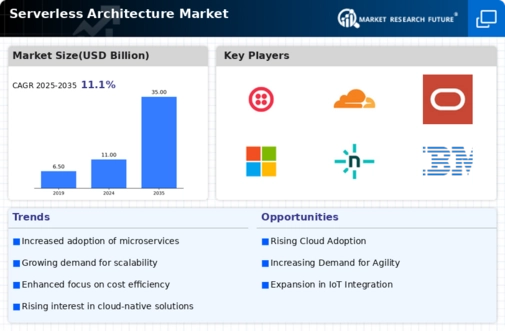Market Analysis
In-depth Analysis of Serverless Architecture Market Industry Landscape
The serverless architecture market is experiencing dynamic shifts driven by the relentless evolution of cloud computing and the growing demand for efficient, scalable, and cost-effective solutions. Serverless computing, a paradigm that allows developers to focus on code without the need to manage underlying infrastructure, has gained substantial traction in recent years. The market lifes have several building blocks, including technological developments, changing market needs, and the competitive business environment. A main motivator of dynamics in cloud computing markets is the continuous growth of technologies in this segment. This will put more powerful serverless capabilities into the hands of business. These innovations usually lead to better performance, faster response time and more capability which makes these types of architectures increasingly interesting for companies who want to get their workflow quicker. Therefore, this market can be seen as an arena where a large number of updates are constantly infused and feature improvements taking place practically every day, resulting in great competition, where providers are ambitious to be the best. Additionally, the rapidly changing nature of business needs brought diversity in the deployment market. To deploy applications faster and be more efficient with their operations, the organization clearly sees that the serverless model is the ideal fit with the agile and scalable nature of the software. The capability of automatically scaling resources according to demand fluctuations along with the "pay-as-you-go" pricing structure is at the base of the appeal of business oriented to cost optimization in a flexible environment. This dynamic change in business targets being a crucial point for the future of the serverless architecture market is where companies need to consider agility, and resource efficiency saving as a value. So, another is the serverless architecture market which is driven by such trends as the microservices adoption and containerization. Instead of the hidden complexities of infrastructure management, these technologies offer complementing resources for organizations to break down applications into separate components creating a perfect fit for the serverless model. As businesses embrace microservices and containers, the demand for serverless solutions that seamlessly integrate with these architectures continues to rise. This interplay between different technological trends contributes to the dynamic nature of the serverless market, as providers adapt their offerings to meet the evolving needs of modern application development.

















Leave a Comment